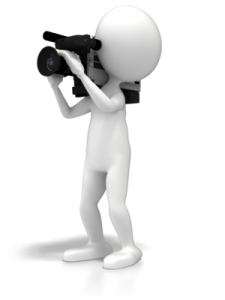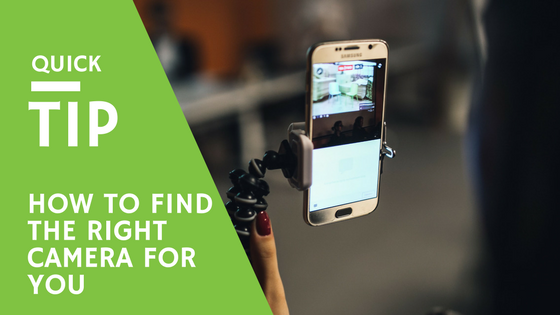I have been doing a fair bit of video editing for clients lately. Seems more and more of them are starting to understand the power of online video and I’m super excited to help them polish up their message so that it can get out to their audience and really showcase their expertise. If you’re considering online video, one of the first things you’ll need to do is invest in a video camera which means you’ll need to determine what kind of video camera you need. Note: I said what kind of camera you need, not the camera you want.
I recently moved and one of the things that I lost in the transition (meaning I didn’t pack it and haven’t yet picked it up from my old office space) is my Flip Camera. I loved my little flip as it made doing video really easy and I’m a little sad that now that I have a new office space that lends itself to better video, I don’t have my camera. So I’ve been thinking about investing in a new camera. Here are the factors I will consider when making my decision:
 Budget
Budget
Budget is often at the top of my list when making a decision for my business. How much is it going to cost? What will it enable me to do? How much will my revenue stream increase as a result? These are typically the questions I ask myself when evaluating different solutions and more often than not, I don’t pick the lowest price offering but the offering that has the greatest impact on my revenue stream.
How Will The Video Camera Be Used
Seems like a simple question that doesn’t deserve a lot of thought but it really is an important factor to consider. Make a list of every possible scenario in which you’d use your camera. Will you use it to film personal as well as business videos? Will you need to travel with the camera? Do you want professional quality video or do you prefer more homegrown type video? Will you be streaming the video online or releasing physical DVD products? Will you be interviewing others, etc., etc. Write down every single use you can think of for your camera.
Determine Your Equipment Requirements
Now that you have a list of how you’d like to use your camera, turn your attention to the software and equipment you’ll need to have for those uses. If you plan to record your video and upload straight to YouTube without editing or even connecting to a computer, then what type of camera will meet that need? If you plan to edit, what kind of software will you be using? If you want to produce professional quality video, what kind of audio will you need (microphone, boom, etc.) and what kind of lighting will you need? Will you need any other special equipment or software? Write it all down.
Determine Your Output Requirements
I have a client who needs to send me a video for his membership site every time he wants to release a new video as the format that he outputs from is too large for online video streaming and needs to be compressed and converted into a better format for online streaming. Go back to your software list and write down all of the supported video formats. Go back to your list of uses and write down the best video formats for each use. You’ll also need to take note of how you will connect your camera to your computer (if applicable) and what inputs are available to you for connecting your camera to all the equipment you need, including your computer.
Now that you’ve done all that prep work, the fun part of shopping begins. With your list in hand, start shopping. Take your time and refer to your list before you make your final purchase decision. Finding the right video camera for your needs is more important than finding the one with the best reviews.







Leave A Comment